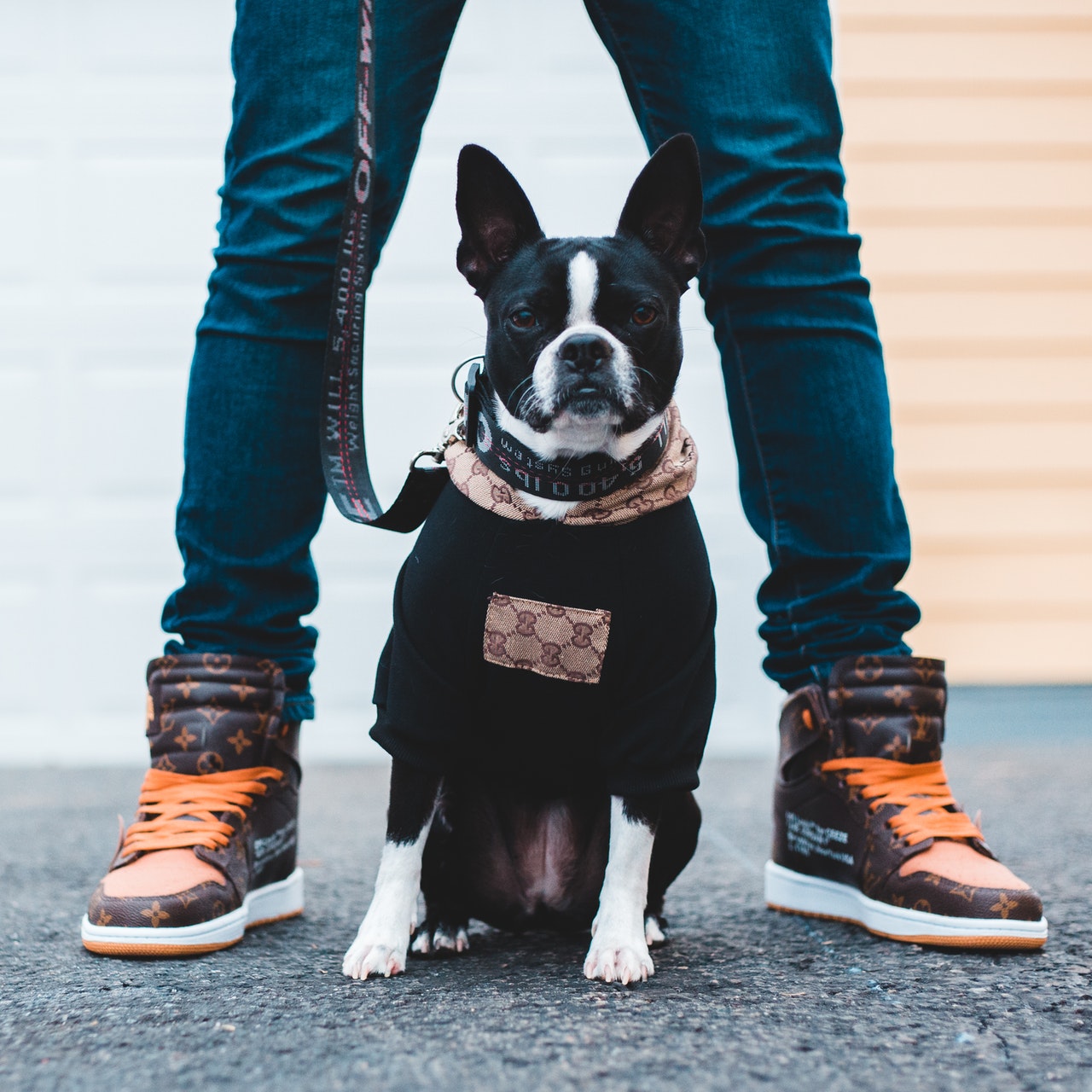Loose leash walking: Making “walk time” enjoyable for both you and your dog
by Ontario SPCA and Humane Society | Dog Care | August 14, 2020

Teaching your dog to have healthy habits and good behaviour increases the human-animal bond and reduces the risk of any problems that may arise both in your home, and out in public.
One key behaviour is teaching your dog “loose leash walking,” which is teaching them not to pull. It can be difficult to enjoy time out with your dog when he is pulling you everywhere.
It can also be one of the more challenging things to teach your because they are typically so excited to get outside and go for a walk. If you are unsure about how to teach your dog this new skill, you can also take them to a reward-based professional dog trainer or puppy behaviour training class.
Why dog walking?
Ensuring your dog has proper walking training is important. ShelterHealthPro says it provides socialization, obedience skills, and exercise to keep them healthy. It also makes walking with your dog safer and more enjoyable.
Walking kit
A walking kit can be very helpful when teaching good walking skills to reinforce good behaviour. ShelterHealthPro suggests a few key items to have in your kit:
- • Treat bags/pouch to hold the dog treats.
- • Small high-value treats such as small pieces of biscuits, kibble, hot dogs, carrots, or cheese.
- • Clicker – a small noisemaker that clicks when you notice a positive behaviour. It gives your dog an audible cue that a treat or praise is coming.
- • Carabineer clips to secure the dog on route, if needed.
- • A cell phone in case you need assistance from a friend or family member.
The Golden Rule of training
ShelterHealthPro outlines one crucial rule while training: “Reinforce what you want, ignore what you don’t want!”
Animals will act in ways that they’ve learned are successful. This means ways that gain them “good things.” Behaviour that is rewarded is going to be repeated.
For example; when walking your dog, if he is pulling you forward, and you keep going forward, he is being rewarded by achieving his desired goal, which is to keep moving forward as he chooses.
Your dog will act based on what they think are good behaviours. When you reward good behaviour, you’re encouraging it to be repeated. It is important to provide positive feedback to your dog and perfect your timing with this. Be quick with giving the reward so your dog knows the exact moment when he has done something good.
Benefits of positive reinforcements
- Celebrate and foster the human-animal bond.
- Helps you work with animals while maintaining trust.
- Increases their sociability and social interaction skills.
Getting started with loose leash walking:
Pick a place that has minimal distractions to start, and make sure you have plenty of treats. The first thing you want to work on is getting your dog’s attention. You can use the “Watch Me” cue for this (see https://ontariospca.ca/wp-content/uploads/2019/05/Training-for-Shelter-Dogs-Watch-Me.pdf ).
Allow the dog to move to the end of a six-foot leash and ignore him. Whenever the dog looks back at you say, “Yes!” (or click) excitedly and quickly give him a treat. Then ignore him, and repeat, rewarding him for looking at you. Soon you will find the dog is consistently looking back at you and walking towards you. At this point, start moving around – side to side, back and forth, in circles. Again, every time your dog follows you in the direction you move to, say, “Yes!” (or click) and reward him. Now you are ready to start teaching them to walk on a loose leash.
Loose leash walking – Key points to get to “Let’s go”
- Use a six-foot nylon lead, flat nylon collar, or martingale collar.
- Have some off-leash playtime first to burn off excess energy.
- Keep an open line of communication with the dog; don’t leave him guessing. Talk to the dog, encourage him, and offer praise.
- Begin walking, and encourage the dog to follow you by holding a treat in your hand with your arm straight down by your side.
- Deliver the food treat (at knee level) occasionally as the dog walks beside you, using clicker or “yes” verbal cue.
- When the dog pulls ahead, change direction; offer verbal encouragement, when the dog follows, offer “yes” cue and treat.
- Anytime your dog looks up at you while walking, offer the “yes” clue or click and reward them (“Watch Me” exercise, encourages dog to look to you for direction).
- Once the dog is reliably offering the behaviour, add the verbal cue, “Let’s go.”
Note: You can further this technique working off-leash, in a fenced-in area, or indoor space.
Practice and patience will get you and your dog walking together in no time!
To learn more about how to train your dog and positive reinforcements, visit shelterhealthpro.com
Categories
Testimonial
We have supported the OSPCA since 1951
We have supported OSPCA since our arrival in Canada in 1951. Keep up the greatest T.L.C. for animals.